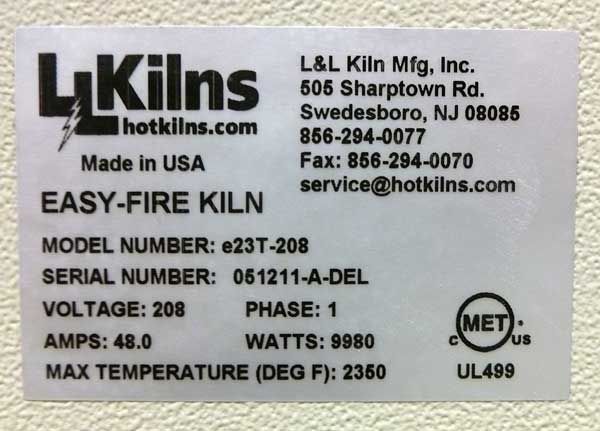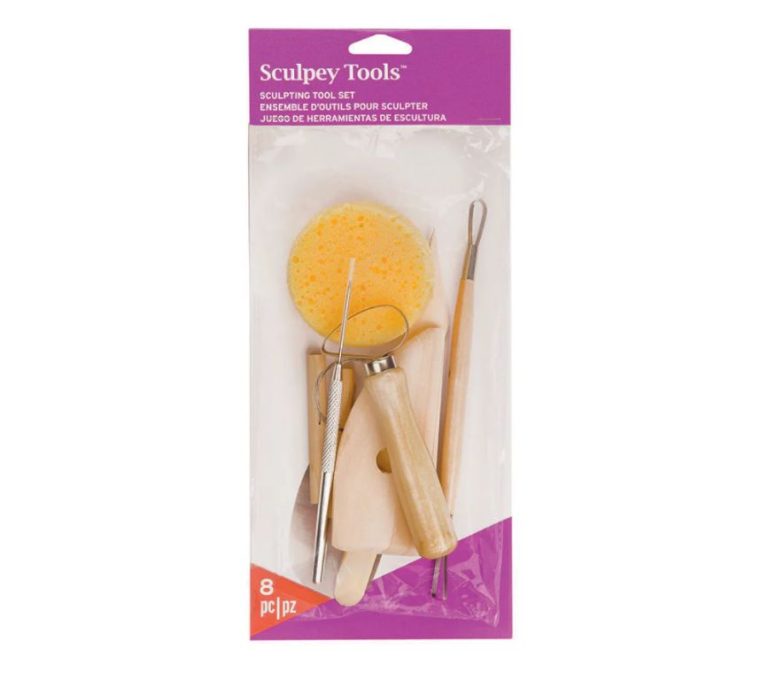How Can I Tell How Old My Kiln Is?
Check the kiln’s nameplate
The best way to identify the age and model of your kiln is to check the nameplate. This metal plate is usually affixed to the control panel or side of the kiln body and contains key information about the kiln.
The nameplate will typically include the kiln’s model number, serial number, and date of manufacture. The date is often represented by a two digit year code at the end of the serial number. For example, a serial number ending in “17” indicates the kiln was made in 2017 (according to this source).
You may also find the kiln manufacturer, voltage, power, and other technical specifications on the nameplate. Having the model number and serial number handy can help you identify the kiln’s age and find replacement parts if needed.
Look up the serial number
One of the best ways to identify the age of your kiln is to look up the serial number. The full serial number is usually printed on a metal nameplate attached to the kiln’s control panel or on the inside of the kiln door. This nameplate provides key information about the kiln such as the model number, power supply specs, and the all-important serial number.
Once you have located the full serial number, you can begin researching it to try to identify the year the kiln was manufactured. Many kiln manufacturers include a date code in their serial numbers. For example, on many Skutt kilns the last two digits of the serial number before any suffixes indicate the year it was made. So a serial number ending in “96” would indicate the kiln was made in 1996. Some manufacturers also include month/year codes within the serial number.
With the full serial number in hand, check the manufacturer’s website or contact their customer support to see if they can look up the manufacture date in their records based on that code. This can provide confirmation of the age of your kiln.
Identify the model
Locating the exact model of your kiln is a key step in determining its age. The model name or number can provide clues about when the kiln was first manufactured. Many kiln manufacturers include the model information on a metal nameplate or sticker on the kiln’s control panel or side.
For example, Skutt Kilnsitter models were given an “A Series” designation and produced between 1980-1996. Evenheat uses model numbers like KM-818 for specific kiln models and provides manuals for their discontinued models on their website. With the model identified, you can research online or contact the manufacturer to learn when that particular model was first released.
Having both the brand and the exact model name or number is crucial for narrowing down the potential age range of your kiln. With some research into old catalogs or manufacturer records, the year or even decade your kiln model was first made can often be discovered.

Examine the wiring
Older kilns often had lower power requirements than modern kilns. Examining the wire gauge and power plug can provide clues about a kiln’s age. Thicker wire gauges like 10 or 12 gauge wire point to an older kiln designed for 240V plugs. Newer kilns tend to use thinner 14 or 16 gauge wire and standard 120V household plugs [1]. The transition from 240V to 120V happened in most households during the 1960s and 1970s. If you see older ceramic connectors instead of modern plastic plugs, that’s another sign of an older kiln [2].
Check the heating elements
The materials used for heating elements in kilns have evolved over time. Older kilns often used Nichrome wire, but it had limitations in longevity and max temperature. Modern kilns typically use Kanthal heating elements, an iron-chromium-aluminum alloy able to withstand higher temperatures. According to Thermcraft, early electric kilns in the 1920s-1930s would often use Calrod or Globar silicon carbide rods encased in porcelain tubes. Over time, metallic alloy wires and ribbons proved more durable. Kanthal ribbons and coils are now common in many electric kilns.
Examine the heating elements closely to determine signs of wear. Elements that appear warped, sagging, discolored or brittle may need replacement. Newer elements will appear straight, tidy and robust. The wires or ribbons should show no fraying or breakage. If the elements have been replaced before, this can offer a clue to the kiln’s age. Checking for markings on the elements themselves may reveal the manufacturer and specifications to cross-reference when it was produced. Replacement heating elements over time is normal, but shows how many firings the kiln has endured.
Consider the insulation
The type of insulation used in a kiln can help provide clues about its age. In older kilns, asbestos was commonly used as an insulation material. However, due to the health risks associated with asbestos exposure, most manufacturers switched to using ceramic fiber insulation by the 1970s and 80s.
Ceramic fiber insulation, made from alumina and silica, can withstand extremely high temperatures up to 2300°F. It provides similar insulating properties as asbestos without the associated health risks. So if your kiln contains ceramic fiber batting or boards, it is likely newer in age.
According to The History of Industrial Kilns, the shift from asbestos to ceramic fiber for kilns occurred rapidly in the 1970s. So if your kiln still has the original asbestos insulation, it is likely from the 1960s or earlier.
Examining the insulation material used in your kiln is one helpful way to gauge its approximate age and era of manufacturing.
Look at the design features
The design of kilns has evolved over time, particularly with regards to popular features and construction materials. Older kilns were often brick-lined, while many modern kilns feature fiber insulation instead.
Early kilns were simple updraft designs, with a firebox or burners at the bottom and exhaust at the top. These brick kilns relied on a natural draft to pull heat upwards through the ware. In the early 1900s, downdraft kilns became popular, reversing the flow of heat with fans and allowing for more even firing.[1]
Another major design shift came with the development of electric kilns in the late 1800s and early 1900s. These replaced solid fuel burners with heating elements, allowing for simpler, cleaner, and more controlled firing. Early electric kilns were basic resistance models, while today’s kilns may incorporate electronic controllers and programmable cycles.
The choice of brick versus fiber lining is another key design factor. Brick holds heat well but requires extensive maintenance to repoint mortar joints. Fiber linings introduced in the 1960s provide good insulation while being lighter and easier to repair. However, they can break down over time.[2] The age of the lining may provide clues as to the kiln’s age.
By examining key features like heating design, draft direction, lining material, and controls, one can make reasonable estimates of a kiln’s age and origins. Consulting reference books or experts can help date changes in preferred designs and materials.
[1] https://thermcraftinc.com/history-industrial-kilns/
[2] https://www.ksiinc.com/ceramic-engineering/kilns/electric-kilns-types
Examine the controls
The controls of a kiln have evolved significantly over the years. The earliest kilns relied on manual controls. Potters would monitor temperature changes by looking at the color and observing the kiln’s interior through peepholes. They would adjust air flow and fuel manually in an attempt to control temperature.
It wasn’t until the 1970s that electronic controllers became widely available for kilns 1. These allowed for more precise control of temperature profiles during the firing process. Early electronic controllers used basic thermocouples and on/off switching. The introduction of PID control in the 1990s brought even better temperature stability.
Modern digital kiln controllers use Type K or Type S thermocouples to measure temperature. Type K uses a Chromel and Alumel junction and can withstand temperatures up to around 2300°F. Type S uses a Platinum and Rhodium junction for even higher temperature capability. The digital controllers allow programming of ramps and holds throughout the firing cycle to precisely control the temperature profile.
Check Manufacturer Records
One of the best ways to identify the age of your kiln is to contact the manufacturer directly and provide them with the serial number. Most major kiln companies keep detailed records of when each kiln was produced. With the serial number, the manufacturer can look up the exact date that the kiln was manufactured.
To find out how old your kiln is, locate the metal nameplate on the control panel or side of the kiln. This plate should have the brand name, model number, and a unique serial number. The serial number is the key to determining the age, so make sure to write this number down.
Once you have the serial number, you can call or email the manufacturer’s customer service department. For example, if you have a Skutt kiln, you would contact Skutt Ceramic Products and provide the serial number. A customer service representative can then look up when that individual unit came off the production line.
Other major kiln manufacturers like Olympic Kilns, L&L Kiln Mfg, and Paragon Industries also keep databases of serial numbers and manufacture dates. Reaching out to them with your serial number is the simplest way to identify the age of your kiln.
With the manufacturer’s date of manufacture, you’ll know exactly when your kiln was first produced. This can provide helpful context on the technology and features that would have been available at the time. Understanding the age of your kiln is key for proper maintenance, troubleshooting, and determining when upgrades may be needed.
Consult an Expert
If the age of your kiln is still unclear after examining all available information on the unit itself, consulting a kiln expert is the next step. There are two main options for obtaining expert help in dating an older kiln:
Local kiln repair technicians
Technicians who specialize in kiln repair often have extensive experience working on various models over many decades. They may be able to identify key design elements that reveal the approximate age of your kiln. Check for local kiln repair shops in your area and inquire whether they offer consultations to date older kilns based on a visual inspection.
Kiln collectors knowledgeable in older models
There are hobbyists and collectors who specialize in collecting and restoring vintage kilns, particularly scarce or historically significant models. These experts have an in-depth knowledge of kiln manufacturing history and changes in kiln technology over the decades. If photos and details of your kiln are shared with them, they may be able to provide valuable insights into its approximate age and origins based on distinctive features.




